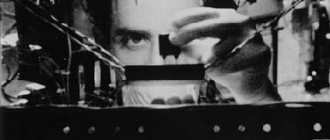4.2. Age concept
The concept of age is closely related to the psychological development of children. R.S. Nemov defined age as a qualitatively unique period of physical, psychological and behavioral development, characterized by characteristics unique to it.
According to L.S. Vygotsky, age is a relatively closed cycle of child development, which has its own structure and dynamics.
In psychology, age is divided into physical (chronological) and psychological.
Physical age
- this is the life of a child in days, months, years that have passed since his birth. It can be called an external network, against the background of which the process of the child’s mental development and the formation of his personality takes place.
Psychological age,
according to Vygotsky, this is a qualitatively unique period of mental development, characterized primarily by the appearance of a new formation, prepared by the entire course of previous development. In other words, it indicates the level of psychological development achieved by a certain age.
Sometimes it happens that a child is physically five years old, but in terms of psychological development he corresponds to a six or seven year old, and sometimes vice versa, but here we will be talking about mental retardation.
Age is a time characteristic of human ontogenetic development. B.G. Ananyev, considering the “age factor,” pointed to the unity of the influences of growth, general somatic and neuropsychic maturation in the process of upbringing and human life. Individual development of a person occurs over time. Therefore, age is not only the number of years lived, but also the inner content, the spiritual development of a person, the changes in his inner world that have occurred over these years. It is the inner world that people differ from each other, thanks to which we can talk about the dissimilarity, uniqueness and originality of people.
Both a person as a whole and his temporal characteristics (meaning age) are the interpenetration of nature and history, biological and social. Therefore, age-related changes in individual human properties are both ontogenetic and biographical.
Related materials:
Lancôme | Estee Lauder | Decleor | Lancome | Estee Lauder | Decleor | age | aging | youth | immaturity
Articles
- The Lords of the Rings: original collections July 25, 2015, 00:00
- Technology news June 21, 2016, 00:00
- Unusual: fantasies on the theme of time January 30, 2022, 00:00
Video
- Summer office makeup from Estee Lauder August 17, 2010, 00:00
- Sultry summer from Estee Lauder August 24, 2010, 10:49
- Smoky Eyes by Estée Lauder March 17, 2014, 08:30
4.4. The concept of sensitivity. Critical and crisis periods
Sensitivity
- this is a characterological feature of a person, manifested in increased sensitivity to the events happening to him; usually accompanied by increased anxiety, fear of new situations, people, all kinds of tests, etc.
Many scientists have paid attention to the features of the sensitive period (see 2.8). Thus, C. Stockard believed that during the embryonic development of animals and humans there are periods of increased growth and increased sensitivity of individual organs and systems to external influences. And if for some reason development is inhibited, then this leads to a slowdown in the future. According to this point of view, if in childhood during the sensitive period some function does not develop, then its correction in the future is impossible.
MM. Koltsova, D.B. Elkonin, B.G. The Ananyevs hold the opposite point of view. In their opinion, it is possible to make up for lost time during the sensitive period at a later age, although this will require some difficulties. B.G. Ananiev, in laboratory conditions, established favorable periods for the development of attention, thinking, various types of memory and motor functions in children and adults. They have a wave-like character, that is, periods of active development are replaced by a slight decline.
L.S. Vygotsky introduced the concept of “critical period” into psychology. By it he understood global restructuring at the level of the individual and personality, occurring at a certain time. The critical period can be calm in development (lysis) or turning point (crisis). L.S. Vygotsky noted that these periods act as “turning points in child development, sometimes taking the form of a crisis... development sometimes takes on a stormy, rapid, sometimes catastrophic character” and believed that “development here, unlike stable periods, does more destructive than creative work "(Vygotsky L.S., 1991). But he also noted positive development trends, which constitute the main and fundamental meaning of any critical period. At the end of each transition period, new properties and qualities are formed that were not present in the previous period - they are called new formations.
Throughout a person’s life, there is more than one critical period. Vygotsky identified several such periods: the neonatal period, one year, three years, six to seven years, and adolescence. Some researchers identify critical periods of adulthood.
In physiology, critical periods are called age-related crises. Age crises!
– these are the reactions of the human body to the restructuring of physiological processes in different age periods. These are rapid shifts, each of which begins a new phase of the life cycle. Transitions from one age period to another are associated with changes in the physical characteristics and psychological characteristics of the child, with a holistic restructuring of his body and behavior. The behavior of children during such a transition usually changes not for the better; many become withdrawn and irritable, which causes anxiety in adults. Thus, the age crisis indicates that significant changes are taking place in the child’s body and psychology, that difficulties have arisen on the path of physical and psychological development that the child himself cannot cope with. And overcoming the crisis is confirmation that the child is already at a higher level and has moved to the next psychological age.
How is psychological age diagnosed?
There is a well-known technique that allows you to establish the degree of psychological maturation using 4 aspects (based on the ideas of the American researcher Robert Kastenbaum).
What are these 4 aspects?
- vital activity indicator;
- appearance;
- self-perception;
- hobby.
In addition, psychological age can be assessed by its 3 main components:
- mental age (intellectual characteristics);
- social age (an aspect indicating social maturity and the ability to adapt to the surrounding reality);
- emotional age (an indicator of personality maturity, balance, emotional reactions).
All of the above applies more to young people. And for people of the older generation (who are retired), the characteristics of their social environment, social and emotional support have a greater influence.
For example, residents of the CIS countries, as a rule, are ahead of physical aging and see themselves as much older than they really are. Why is this happening? The declining level of finances, personal and career prospects, and the emotional intensity of life are to blame for everything. Often all this occurs in our compatriots by the age of 45-50.
As for Europeans, they, on the contrary, demonstrate to the whole world their internal rejuvenation. Many residents of European countries, even after retirement, practice an active lifestyle, travel a lot and say that they feel “a little over 30.”
Moreover, the higher the physiological age, the longer periods of time he can use at the level of consciousness. And when in young years a couple of years are a whole life, then at 60-70 years old we can already talk about ten-year (or even twenty-year or more) time intervals.
5.1. Newborn crisis
The first year of a child’s life can be divided into two periods: neonatality and infancy. Newborn period
is the period of time when the child is physically separated from the mother, but connected with her physiologically, and lasts from birth until the appearance of the “revitalization complex” (at 4–6 weeks).
The infancy period
lasts from 4–6 weeks to one year.
Newborn crisis
- This is the direct process of birth. Psychologists consider it a difficult and turning point in a child’s life. The reasons for this crisis are as follows:
1) physiological.
When a child is born, he is physically separated from his mother, which is already a trauma, and in addition to this he finds himself in completely different conditions (cold, airy environment, bright light, the need for a change in diet);
2) psychological.
Separating from the mother, the child ceases to feel her warmth, which leads to a feeling of insecurity and anxiety.
The psyche of a newborn child has a set of innate unconditioned reflexes that help him in the first hours of life. These include sucking, breathing, protective, indicative, grasping (“grasping”) reflexes. We inherited the last reflex from our animal ancestors, but, being not particularly necessary, it soon disappears.
The neonatal crisis is an intermediate period between intrauterine and extrauterine life. This period is characterized by the fact that at this age the child mostly sleeps. Therefore, if there were no adults nearby, he could have died after a while. Adults surround him with care and satisfy all his needs: food, drink, warmth, communication, restful sleep, care, hygiene, etc.
A child is considered unadapted to life not only because he cannot satisfy his needs, but also because he does not yet have a single formed behavioral act. Watching him, you can see that even sucking has to be taught to the child. He also lacks thermoregulation, but the instinct of self-preservation is developed: by adopting an intrauterine position, he reduces the heat exchange area.
The newborn period is considered a time of adaptation to new living conditions: the time of wakefulness gradually increases; visual and auditory concentration develops, i.e. the ability to focus on visual and auditory signals (for more details, see 6.2); The first combined and conditioned reflexes develop, for example, to the position during feeding. There is a development of sensory processes - vision, hearing, touch, and it occurs much faster than the development of motor skills.
5.2. Mental development of a child during the newborn period
During this period, the child is able to distinguish salty, bitter, sweet tastes and respond to sound stimuli. However, the most important point in his mental development is the emergence of auditory and visual concentration. Auditory
concentration occurs in 2–3 weeks.
The child freezes and becomes silent at a sharp sound, such as a slamming door. In the third or fourth week, he already reacts to a person’s voice. This manifests itself as follows: he not only freezes, but also turns his head towards its source. visual
appears . It happens like this: the child freezes and briefly holds his gaze on a bright object that comes into his field of vision.
Thus, thanks to the development of auditory and visual concentration in a child, by 5–6 weeks the foundation for the transition from sensations to perception begins to be laid. He can already perceive an object not in parts, but as a whole, follow a moving object with his eyes or turn his head behind a moving sound source. He reacts to the stimulus in the following way: he freezes and focuses only on the sound source or object, all other reactions stop at the moment.
Over time, after acquiring the ability to recognize the voice of the mother caring for the child and see her face, emotional contact with her is established. The so-called “revival complex” appears (see 5.3).
5.3. Neoplasms of the newborn period
From the first hours of a child's life, adults are sources of sound and auditory signals for him. They look at the newborn, show him various objects, talk to him, thus activating his indicative reactions.
When monitoring the birth and first weeks of the child’s life, the following results were obtained.
A child begins his life by crying, and this is considered normal. Then the cry becomes a manifestation of negative emotions. A newborn screams when unpleasant sensations arise associated with the need for sleep, food, warmth; the cry is a reaction to wet diapers, etc. The cry is accompanied by facial changes: wrinkling of the face, redness of the skin, in addition, the child begins to make uncoordinated movements.
In the first week of life, movements similar to a smile are observed on the newborn’s face during sleep. Since this occurs during sleep, the researchers considered them to be spontaneous and reflexive muscle contractions. Also, in the first week of life, an unconscious smile appears on the child’s face with high-pitched sounds and various sound stimuli, but by the fifth week of life, just a human voice does not cause a smile; the child needs visual stimuli, in particular the sight of a human face. The reaction to the image and voice of an adult is as follows: the child experiences inhibition of general movements, after 10 seconds an expressive smile appears on the face, which disappears after 35 seconds. This is how communication with an adult occurs, which is considered a manifestation of the child’s first social need.
Gradually, by about one month, the newborn develops a special emotional-motor reaction: when he sees his mother’s face, he fixes his gaze on it, stretches out his arms to her, quickly moves his legs, makes joyful sounds and begins to smile. This reaction is called the revitalization complex.
The appearance of the revitalization complex is a new formation of this period, is considered the end of the neonatal period and indicates the transition to infancy.
D.B. Elkonin wrote: “A smile on a child’s face... is the end of the newborn crisis. From this moment he begins an independent mental life. The further mental development of the child is, first of all, the development of the means of his communication with adults” (Elkonin D.B., 1989).
M.I. Lisina believed that the revitalization complex indicates the emergence of a child’s need to communicate with adults.
R. Spitz and F. A. Wolf in their studies proved that at the age of 2 to 5 months a child smiles at any person, and from 4–5 months he begins to smile at his mother and at the sight of other familiar faces. Through a smile, a positive emotional contact is established between the child and the parents, which leads to affection and a tender, warm relationship.
The revitalization complex comes to the fore when an adult comes into the child’s field of vision - then other needs lose their importance. The child begins to smile and move, wanting to attract the attention of adults. Such a reaction to close people suggests that for the child they are not only a necessary condition for development, but also its source. It has also been established that frequent, friendly communication between an adult and a child contributes to the development of a revitalization complex, while rare and indifferent communication hinders it, which can lead to a delay in the child’s mental development.
5.4. Crisis of the first year of life
In the first year of a child’s life, in infancy (from 1 month to a year), vision, perception, speech, memory, thinking develop, and emotional contacts with others are formed. Let's look at how this happens.
Vision
is one of the main human sense organs. Therefore, it begins to develop first. At first, the child can only focus his gaze on an object for a very short period of time. After the second month of life, visual concentration becomes longer and the ability to distinguish the simplest colors appears. At 2 months, while awake, the child is engaged in examining surrounding objects, especially when he is fed and in a calm state. At this age, the baby begins to distinguish people from surrounding objects, but vision is still weak.
By three months, a fairly good level of development of eye movement is noted, the duration of concentration reaches 7–8 minutes. The child begins to distinguish the shape of objects and can follow their movement. The baby's eye movements will develop faster and become more perfect if bright, attractive objects or people performing various movements begin to fall into the field of vision, which he will observe.
At 4 months, the child looks actively: reacts emotionally to what he sees, moves, squeals.
The variety of experiences an infant receives contributes to his cognitive development. Therefore, to satisfy his needs for new experiences, the environment must be made attractive and interesting - otherwise cognitive development will slow down.
Let us consider the development of perception. By one year, such a property of perception as objectivity appears. Objectivity
- this is the correlation of one’s feelings and images with the objects of the surrounding reality. The child can distinguish timbre, volume and pitch of sound, he develops the ability to remember and store images in his memory in their primary forms. Until three or four months of age, he can store the image of a perceived object for no more than one second; later, the storage time increases, and gradually the baby will begin to recognize his mother at any time. At 8-12 months, he begins to identify objects in the visual field, and not only as a whole, but also in parts.
Domestic psychologist A.V. Zaporozhets believed that the process of cognitive development in an infant proceeds as follows. At the age of three months, the perception of the shape and size of an object begins simultaneously with the formation of grasping movements. Further development of perception begins from the moment an object moves in space.
When studying the visual perception of children, it was found that objects located close to each other are perceived by the child as a whole. For example, taking a tower made of cubes by the top, a child wonders why not the whole tower was in his hands, but only part of it. A baby may try for a long time to take a flower from its mother’s dress, not realizing that it is drawn.
As a result of observations of children, it was found that when perceiving objects, they first focus on their shape, then on size, and only then on color (at the age of about 2 years).
Infants have a highly developed cognitive interest. They can look at objects for a long time, highlighting their contours, contrasts, simple forms, moving from horizontal elements of the design to vertical ones, paying special attention to color. They also have an exploratory reaction to everything new.
In the first year of a child’s life, memory actively develops .
All its genetic types develop: emotional, motor, imaginative, verbal.
Emotional
memory helps him orient himself in reality, fixing attention and directing his senses to the most emotionally important objects.
Motor
memory appears at 7–9 weeks.
The child can repeat any movement, and characteristic gestures appear. Then babies begin to develop figurative
memory.
If at 4 months he can simply recognize an object, then at 8–9 months he is able to reproduce it from memory. If you ask a child where a certain object is, he begins to actively look for it, moving his gaze, turning his head and torso. The development of figurative memory affects his communication and the formation of the motivational sphere. When a child learns to recognize, he begins to divide adults into pleasant and unpleasant. He smiles at people who are pleasant, but when he sees someone who is unpleasant he shows negative emotions. Verbal
memory begins to develop from 3–4 months, when the child begins to recognize the mother's voice. Then, from 6 months, he can correctly indicate the named object or find it if it is out of sight.
The development of reproduction leads to the emergence of the first motives.
They contribute to the formation of his personality and the development of independence from others. Incentives and motives appear that begin to guide the child’s activities.
, thinking develops
baby. For now, this is visual and effective thinking, which is expressed in manipulative hand movements and the formation of operational structures. As a rule, the longer a child looks at a toy, the more different qualities he discovers in it, the higher his intellectual level.
Speech develops
Until one month, passive speech is observed: the child simply listens and distinguishes sounds. At about one month of age, he begins to make simple sounds, such as ah, uh, uh. By the end of the first - beginning of the second month of life, the child develops special attention to speech, called auditory concentration. Then, at 2–4 months, humming occurs, and at 4–6 months, humming and repetition of simple syllables appear. At 4 months, the baby distinguishes adult speech by intonation, which indicates the ability to use speech as a means of emotional communication. From 6 months, babbling is observed, in which some repeating sound combinations can be distinguished, mainly associated with the child’s actions. He also focuses on the emotional tone, nature of the statement and rhythm. At 9-10 months, the baby speaks its first words. By the end of the first year of life, he understands 10–20 words spoken by adults.
L.S. Vygotsky called the speech of an infant autonomous, since it is very different from the speech of an adult, although its sound sometimes resembles “adult” words.
mental development occurs
child.
E. Erikson believed that in infancy a feeling of trust
or
distrust
of the world is formed, that is, closedness or openness to the world around us. The main role in the emergence of this feeling is played by parents, in particular the mother. It is this feeling that will subsequently help children adapt to the world around them, establish contacts with people and believe in the best.
The same opinion was shared by the English psychologist and psychiatrist D. Bowlby, the author of the so-called “attachment theory.” He believed that the close emotional connection established between a child and his mother from the first days of his life creates a sense of security and safety in the baby. If the establishment of this connection is disrupted, then problems may arise in the mental development of the child, primarily in the structure of his personality. So that he does not have problems in the future, in the first years of life, children must be given warmth and affection, which, according to D. Bowlby, are more important than any proper care and training.
These changes in the development of the child lead to a critical period, which is accompanied by stubbornness, aggression, negativism, and resentment. These qualities are not stable and disappear with the end of the crisis.
The one-year crisis occurs at the junction of two periods: the end of infancy and the beginning of early childhood. This crisis is accompanied by external manifestations and internal causes. External manifestations
are as follows: when an adult forbids something to a child or does not understand him, he begins to worry, scream, cry, tries to show independence, and affective states may even arise.
The internal causes
of the crisis are as follows: there are growing contradictions between the needs for knowledge of the world around us and the capabilities that the child has.
The essence of the crisis of the first year of life is that the child begins to feel more independent. The social situation of fusion between a child and an adult disappears, and two people appear: a child and an adult. And this is justified, because the child begins to speak, walk, and actions with objects develop. But his capabilities are still limited, since, firstly, the child’s speech is autonomous in nature, and secondly, an adult helps him in carrying out any action. This is clearly expressed in the construction of objects that the child manipulates. D.B. Elkonin pointed out that the child must be exposed to the social way of using objects. It is impossible to show this to a baby, so an adult has to construct the objects himself.
Biography of the test author
Sergei Sergeevich Stepanov is a famous Russian psychologist, writer, associate professor at the Moscow City Psychological and Pedagogical University, and is the developer of a test for determining psychological age.
He entered the psychology department of Moscow State University and after graduating there he began his career as a psychologist. In the period from 1984 to 1997, he worked at the publishing house "Big Russian Encyclopedia" as a scientific editor and is the author of many articles in various areas of psychology. He was actively involved in translations into Russian of books by such famous psychologists as A. Maslow, K. Rogers, G. Yu. Eysenck, P. Ekman, F. Zimbardo.
By 2012, more than 30 books had already been published, including the book Psychological Tests (2002), where a test for psychological age was published.
5.5. Leading activity
The leading type of activity in infancy is emotional and personal communication
with adults, i.e. with those who mainly care for the baby: mother, father, grandmother, grandfather or other adult. A child cannot do without the help of an adult, since at this age he is weak and completely helpless. He is not able to satisfy any of his needs on his own: they feed him, bathe him, dress him in dry and clean clothes, move him in space (take him in his arms and walk around the room, take him for a walk, etc.), monitor his health and, which is very important, they just communicate with him - talk. The need for communication arises in a child at 1–2 months. The revitalization complex that appears at the sight of a mother or another adult caring for a child indicates the emergence of a need for communication that must be fully satisfied, since with positive emotional communication with an adult, the child becomes more active, a joyful mood arises, which contributes to the development of his movements , perception, thinking and speech.
A child deprived of full communication with an adult (is alone in a hospital for treatment, placed in an orphanage, etc.) has mental retardation. This is manifested in the following: the child has a meaningless and indifferent gaze directed upward, he moves little, is lethargic, apathetic, and has no interest in his surroundings. All this leads to delayed physical development and late appearance of speech. Therefore, we must remember the following: in order for a child to develop normally both psychologically and physically, it is necessary not only to properly care for him, but also to communicate.
Positions for determining internal age based on the approach of R. Kastenbaum
Based on Kastenbaum’s approach, a person’s psychological age can be determined based on four main aspects:
- The first of these is the degree of vital activity. A forever young person will continue to lead an active lifestyle at any age. Moving towards something new, striving for a rich life - this is the first point of instructions on how to find out your psychological age. The desire to develop always makes you younger.
- The second aspect is the person’s appearance. This is where it becomes a little more difficult to determine. But, most likely, you have noticed with young ladies that even at a young age they try to choose clothes for their wardrobe that make them look older or were intended for more respectable ladies.
- The third aspect is self-awareness. This is where it becomes even more difficult to determine. Only the person himself can guess what age he feels himself to be. Try this.
- The fourth aspect is human interests. We can proceed from their quantity, from their direction. Typically, people who feel older have few interests or favorite hobbies. For the most part, they are fixated only on their responsibilities and therefore may even stop enjoying life.
5.6. Neoplasms of infancy
New developments of infancy are grasping, walking and the first word (speech). Let's look at each act in more detail.
Grabbing
- This is the first organized action that occurs at approximately 5 months. It is organized by an adult and is born as a joint activity of an adult and a child. In order for grasping to occur, the baby’s hand must turn into an organ of touch, in other words, “open up.” The fact is that the baby’s hand is clenched into a fist, so only when he can unclench it will the act of grasping occur. The child’s behavior is very interesting: he looks at his hands, watches how his hand approaches the object.
This act gives him the ability to expand his ability to manipulate objects:
at the age of 4 to 7 months, the child begins to move objects, move them, and extract sounds from them; at 7-10 months, correlated actions are formed, i.e. he manipulates two objects at once, moving them away from himself and correlating them with each other (he takes the object away from himself and brings it closer to another in order to put it, place it, string it on it). From 10–11 to 14 months, the stage of functional actions begins: the child performs more advanced actions of stringing, opening, inserting, manipulating with all possible objects.
The act of grasping is of great importance for the development of object perception.
The image of an object arises when there is practical, effective contact between the image and the object. Thanks to grasping, the child begins to develop a sense of space, since in order to grab an object, you need to stretch out your hand. The space that appears in a child is the space of an outstretched arm. In addition, in order to grab an object, you need to unclench your fist, which leads to the development of your hand.
The desire to reach out to an object and take it (grasp) stimulates the process of sitting,
which, in turn, opens up a world of other objects to the child.
Objects appear that are impossible to reach; they can only be obtained with the help of adults. Therefore, a new type of communication arises between a child and an adult - communication that arises as a result of the child’s desire to master an object that is currently inaccessible to him. M.I. Lisina called such communication situational and businesslike.
With the change in communication, the way of influencing adults also changes: a pointing gesture appears.
Regarding this gesture, L.S. Vygotsky wrote: “At first, a pointing gesture is simply an unsuccessful grasping movement directed at an object and denoting an upcoming action. The child tries to grab an object that is too far away, his hands, extended to the object, remain hanging in the air, his fingers make pointing movements. This situation is the starting point for further development... There is a movement here that objectively points to an object, and nothing more. When the mother comes to the child's aid and interprets his movement as an instruction, the situation changes significantly. A pointing gesture becomes a gesture for others” (Vygotsky L.S., 1991).
The stages of development of the infant’s grasping and movements are given in Table. 4.
Table 4
Children's
In many areas of life, a person reacts and acts like a child who is between 3 and 7 years old. Often, when faced with problems, he feels guilty, helpless, weak, insignificant, or, on the contrary, feels unjustifiably omnipotent or responsible for everything. A psychological “child,” no matter how old he is according to his passport, needs someone big, accomplished, strong next to him, who can “take him in his arms.” This big one will either protect and lead himself, or he needs protection and help.
What to do?
- Learn to make decisions on your own, first in small things.
- Listen to yourself, look for your strengths and use your abilities at work, receiving experience, money and stability in return.
- Give yourself what you are missing. Hug yourself, take care of yourself, give yourself gifts, build healthy relationships with people.
- Letting people go, not trying to solve any problems for everyone, giving others freedom.








